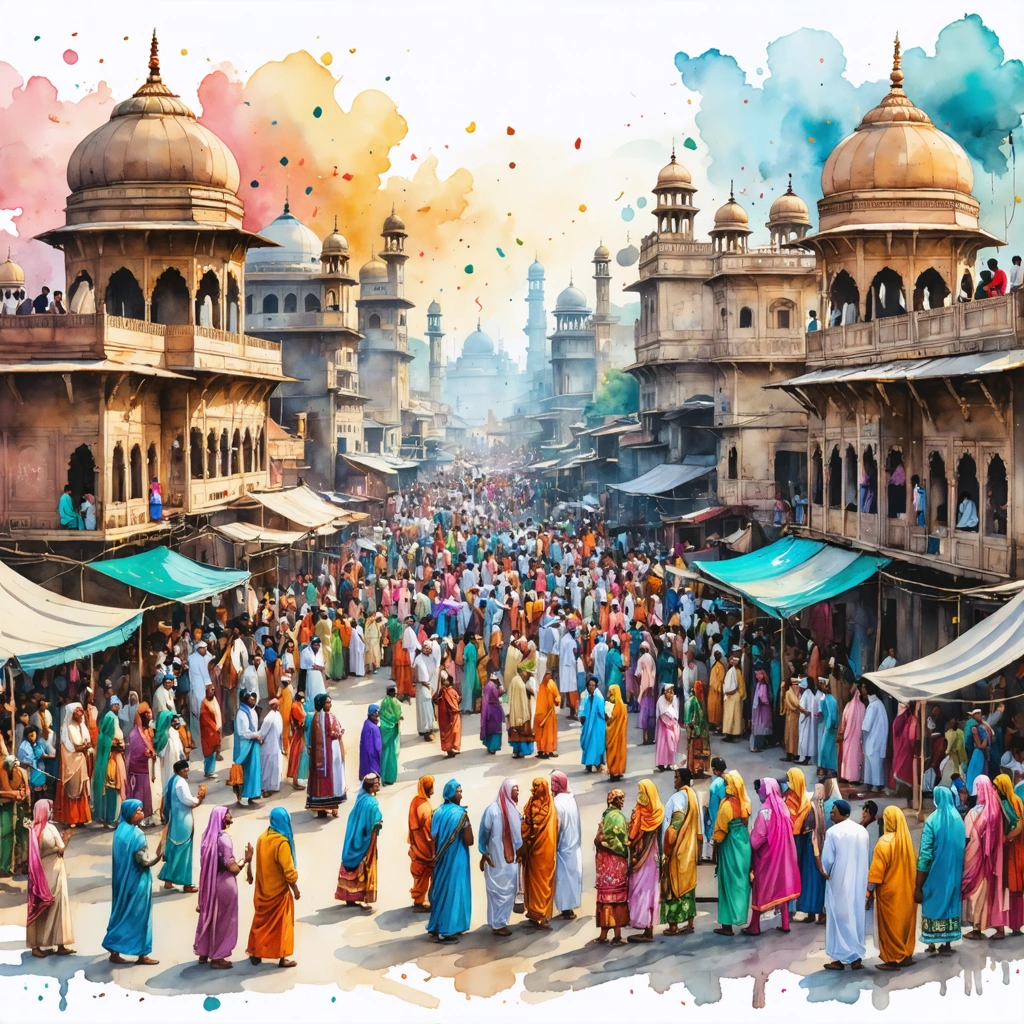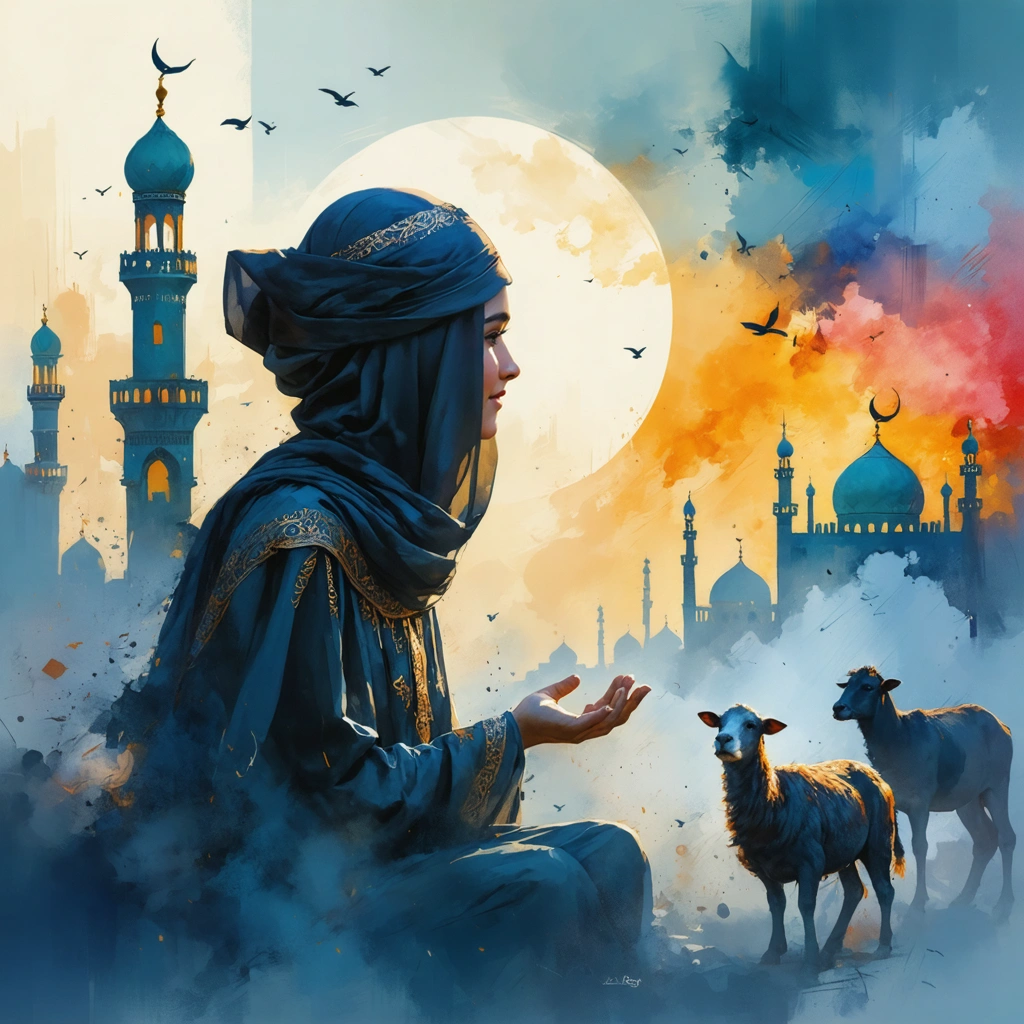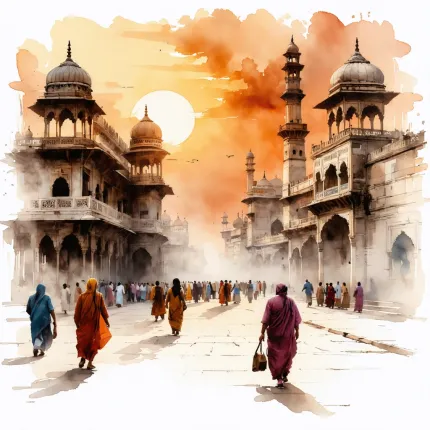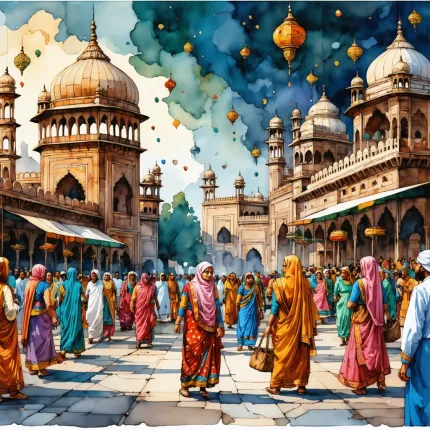
The Vibrant Tapestry of India’s Muslim Cultural Celebrations
Imagine the streets of India during Eid Ul Adha, alive with colors, sounds, and an unshakable spirit of community. From bustling markets to quiet prayer halls, the air is thick with anticipation and joy. Yet, beyond these visible festivities lies a profound ripple effect that touches every facet of life—social, economic, and cultural—within and beyond India’s Muslim population. As 2025 unfolds, it’s crucial to grasp how these celebrations, notably the Eid Ul Adha community impact and the Eid Ul Azha community impact, transcend mere tradition to become powerful agents of unity and progress.
Every year, millions say "Eid Mubarak"—a phrase rich in meaning and hope—across Arabic-speaking communities and beyond. But have you ever paused to consider how the Eid Mubarak in Arabic community impact resonates in a diverse nation like India, where Arabic is a language of faith rather than daily conversation? This introduction invites you to journey through the nuances of these cultural phenomena and understand their deep-rooted influence on India’s socio-cultural landscape in 2025.
When Celebration Meets Community: More Than Just Festivities
At first glance, Islamic cultural events might appear as moments of religious observance and family gatherings. However, their significance stretches far beyond personal joy. Consider this: Eid Ul Adha, also known as Eid Ul Azha, commemorates the profound act of sacrifice and generosity. The community impact here is palpable—millions participate in charitable acts, from distributing meat to supporting the needy, reinforcing social bonds in a way few other occasions can.
Yet, it’s not just about charity. These cultural events serve as a platform for intergenerational dialogue, where elders pass down stories and values, and youth engage in traditions with renewed enthusiasm. The Eid Ul Adha community impact thus fosters cultural continuity, helping preserve Muslim heritage within India’s pluralistic society. At the same time, it presents opportunities for cross-cultural engagement as neighbors from different backgrounds partake in festivities, sharing in the collective spirit.
However, the evolving socio-political climate and rapid urbanization present challenges. Questions arise: How do these events maintain their cultural essence amid modern pressures? Are younger generations as engaged in upholding these traditions? And critically, how do these celebrations influence broader societal harmony and economic vitality?
Unpacking the Layers: The Impact in 2025 and Beyond
Understanding the Eid Ul Azha community impact involves recognizing the multifaceted roles these celebrations play. Socially, they reinforce networks of support, enabling marginalized groups to access resources. Economically, they stimulate local markets—from livestock trading to small businesses selling festive attire and delicacies, contributing significantly to regional economies during the festival period.
Moreover, the phrase "Eid Mubarak" echoes with warmth and brotherhood, transcending linguistic boundaries. The Eid Mubarak in Arabic community impact reflects a shared identity that connects Indian Muslims with the global Ummah, nurturing a sense of belonging and spiritual solidarity. This, in turn, empowers communities to advocate for their rights and participate more actively in civic life.
In this article, we will explore:
- The historical and cultural significance of Eid Ul Adha/Eid Ul Azha in India
- The tangible community impacts observed in 2025, including social cohesion and economic benefits
- The evolving role of language and faith expressions like "Eid Mubarak" in shaping identity
- Challenges faced by the community in preserving traditions amidst modernization
- How these cultural events inspire broader societal harmony and intercultural dialogue
By diving deep into these elements, the article aims to illuminate the profound influence Islamic cultural events have on India’s Muslim community today. Whether you’re a member of the community, a scholar, or simply curious about India’s rich cultural mosaic, understanding this impact offers valuable insights into the power of tradition to shape the present and future.
So, join me as we unravel the layers of celebration, community, and identity that make Islamic cultural events in India a compelling story of resilience, unity, and hope in 2025.

Islamic Cultural Events’ Impact: Understanding the Impact on India’s Muslim Community in 2025
What Role Do Islamic Cultural Events Play in Strengthening Community Bonds in India?
Islamic cultural events in India, particularly those celebrated by the Muslim community, serve as vital platforms for fostering social cohesion, intergenerational bonding, and cultural preservation. Events like Eid Ul Adha, Eid Ul Azha, and the greetings associated with Eid Mubarak in Arabic unite millions of people across diverse regions, reinforcing a shared identity and collective heritage.
In 2025, these events continue to play a crucial role in community engagement by:
- Cultivating Social Solidarity: Through communal prayers, feasts, and charitable acts, these celebrations reinforce the values of empathy and cooperation among community members.
- Preserving Cultural Traditions: Rituals, traditional foods, and linguistic practices (including the use of Arabic phrases like Eid Mubarak) help maintain a deep cultural connection across generations.
- Economic Impact: Local businesses, artisans, and vendors often see a surge in activity during these events, contributing to community economic resilience.
How Does Eid Ul Adha/Eid Ul Azha Community Impact Manifest in India?
Although the terms Eid Ul Adha and Eid Ul Azha refer to the same festival, their impact on the community is profound and multifaceted. This festival, commemorating the willingness of Ibrahim (Abraham) to sacrifice his son as an act of obedience to God, emphasizes charity, sacrifice, and community welfare.
The Eid Ul Adha community impact in India can be analyzed through several dimensions:
- Charitable Giving and Social Welfare: The distribution of meat (Qurbani) to the poor strengthens social equity and supports vulnerable populations.
- Religious and Cultural Education: The festival provides opportunities for religious learning and cultural reinforcement, particularly among youth.
- Community Gatherings: Mass prayers and communal meals enhance feelings of belonging and spiritual fulfillment.
Studies indicate that during Eid Ul Adha, charitable giving in India increases by an estimated 30%, reflecting the festival’s vital role in poverty alleviation and social support networks.
What Is the Significance of ‘Eid Mubarak in Arabic’ Community Impact?
The phrase "Eid Mubarak" translates to “Blessed Eid” and is a traditional Arabic greeting exchanged during Eid celebrations. Its usage within India’s Muslim community holds both religious and cultural significance:
- Preserving Linguistic Heritage: The use of Arabic greetings connects Indian Muslims to the broader global Islamic community, fostering a sense of unity beyond national borders.
- Enhancing Cultural Identity: Incorporating Arabic phrases in day-to-day celebrations sustains a unique cultural identity that blends local customs with Islamic traditions.
- Social Cohesion: Greeting one another with "Eid Mubarak" fosters goodwill, warmth, and mutual respect within the community and with people of other faiths.
In 2025, digital communication platforms have amplified the reach of “Eid Mubarak in Arabic,” allowing for culturally rich, virtual celebrations that include diaspora communities, further expanding its community impact.
How Do These Events Influence Interfaith Relations and Broader Social Integration?
Islamic cultural events in India serve as avenues for interfaith dialogue and social integration. Public celebrations often involve inviting neighbors and friends from different religious backgrounds, fostering mutual respect and understanding.
Key ways these events promote broader social harmony include:
- Community Open Houses: Many mosques and community centers host open events during Eid, encouraging participation from diverse groups.
- Media and Cultural Programs: Television and social media campaigns highlight the messages of peace and unity inherent in Islamic festivals.
- Collaborative Charity Drives: Joint efforts in charitable activities during Eid Ul Adha strengthen interfaith cooperation.
Such initiatives contribute significantly to reducing communal tensions and building inclusive communities.
What Are the Economic and Social Challenges Linked to Islamic Cultural Events in India?
Despite their positive impact, Islamic cultural events also present challenges that communities and policymakers need to address:
- Resource Management: Large gatherings require effective infrastructure and safety measures to manage crowds and maintain public order.
- Environmental Concerns: The disposal of sacrificial animal waste during Eid Ul Adha requires sustainable practices to avoid pollution.
- Economic Inequality: While many benefit economically, some marginalized groups may be excluded from full participation due to financial constraints.
Addressing these challenges through community planning and government support will enhance the positive impact of these events.
What Future Trends Are Expected in the Impact of Islamic Cultural Events on India’s Muslim Community?
Looking ahead to the latter half of 2025 and beyond, several trends are likely to shape the impact of Islamic cultural events:
- Digital Expansion: Virtual celebrations and online charity platforms will increase accessibility and participation.
- Youth Engagement: Educational programs leveraging technology to connect younger generations with cultural heritage.
- Sustainability Initiatives: Growing awareness will lead to eco-friendly practices during festivals.
- Interfaith Collaborations: Enhanced partnerships between different communities for social causes around Eid.
These trends promise to deepen the Eid Ul Adha community impact, enrich the cultural fabric, and foster stronger societal bonds.
Conclusion
Islamic cultural events in India, particularly Eid Ul Adha/Eid Ul Azha, along with the use of greetings like Eid Mubarak in Arabic, profoundly influence the social, economic, and cultural lives of the Muslim community in 2025. Through fostering community cohesion, charitable giving, cultural preservation, and interfaith harmony, these celebrations continue to shape a resilient and vibrant community identity. Addressing challenges and embracing future trends will further enhance their positive impact across India’s diverse social landscape.


